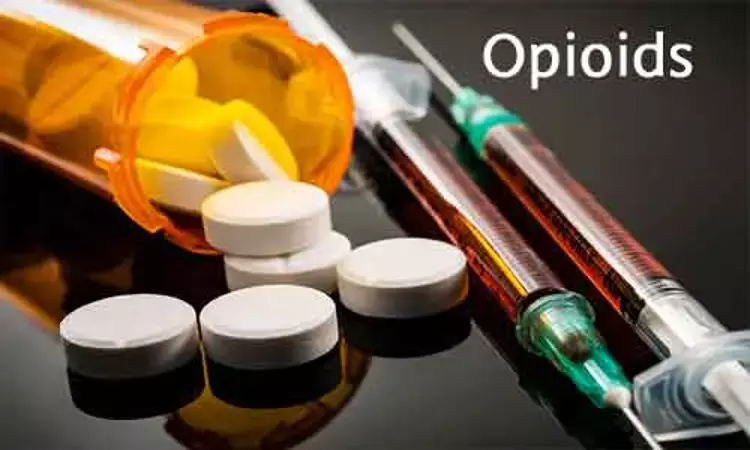- Home
- Medical news & Guidelines
- Anesthesiology
- Cardiology and CTVS
- Critical Care
- Dentistry
- Dermatology
- Diabetes and Endocrinology
- ENT
- Gastroenterology
- Medicine
- Nephrology
- Neurology
- Obstretics-Gynaecology
- Oncology
- Ophthalmology
- Orthopaedics
- Pediatrics-Neonatology
- Psychiatry
- Pulmonology
- Radiology
- Surgery
- Urology
- Laboratory Medicine
- Diet
- Nursing
- Paramedical
- Physiotherapy
- Health news
- Fact Check
- Bone Health Fact Check
- Brain Health Fact Check
- Cancer Related Fact Check
- Child Care Fact Check
- Dental and oral health fact check
- Diabetes and metabolic health fact check
- Diet and Nutrition Fact Check
- Eye and ENT Care Fact Check
- Fitness fact check
- Gut health fact check
- Heart health fact check
- Kidney health fact check
- Medical education fact check
- Men's health fact check
- Respiratory fact check
- Skin and hair care fact check
- Vaccine and Immunization fact check
- Women's health fact check
- AYUSH
- State News
- Andaman and Nicobar Islands
- Andhra Pradesh
- Arunachal Pradesh
- Assam
- Bihar
- Chandigarh
- Chattisgarh
- Dadra and Nagar Haveli
- Daman and Diu
- Delhi
- Goa
- Gujarat
- Haryana
- Himachal Pradesh
- Jammu & Kashmir
- Jharkhand
- Karnataka
- Kerala
- Ladakh
- Lakshadweep
- Madhya Pradesh
- Maharashtra
- Manipur
- Meghalaya
- Mizoram
- Nagaland
- Odisha
- Puducherry
- Punjab
- Rajasthan
- Sikkim
- Tamil Nadu
- Telangana
- Tripura
- Uttar Pradesh
- Uttrakhand
- West Bengal
- Medical Education
- Industry
Methadone and buprenorphine effective in opioid use disorder but underused: JAMA

USA: Methadone and buprenorphine may be used as first-line treatments for opioid use disorder (OUD), a recent study in the journal JAMA Network Open has suggested.
According to the study, treatment with buprenorphine or methadone was associated with reductions in overdose and serious opioid-related acute care use compared with other treatments. Strategies are however needed to address their underuse.
The increasing burden of opioid use disorder has resulted in increased opioid related-mortality and morbidity causing 47 600 overdose deaths in 2017 alone. Despite decreases in prescription opioid supply, hospitalization costs attributable to opioid-related overdose and associated health complications have increased. This calls for the need for greater attention on improving the access to effective OUD treatment.
Medication for opioid use disorder (MOUD) is effective and improves mortality, treatment retention, and remission, but most people with OUD remain untreated -- an estimated 1 million people with OUD remain untreated with MOUD annually.
Clinical trials have demonstrated the superiority of MOUD compared with nonpharmacologic treatment, national data on the comparative effectiveness of real-world treatment pathways are lacking.
Sarah E. Wakeman, Division of General Internal Medicine, Department of Medicine, Massachusetts General Hospital, Boston, and colleagues examined the associations between opioid use disorder (OUD) treatment pathways and overdose and opioid-related acute care use as proxies for OUD recurrence.
For the purpose, the researchers studied 40 885 people diagnosed with OUD using a large U.S. medical claims database. For OUD treatment, 24 258 (59.3%) received nonintensive behavioural health, 6455 (15.8%) received inpatient detoxification or residential services, 5123 (12.5%) received MOUD treatment with buprenorphine or methadone, 1970 (4.8%) received intensive behavioural health, and 963 (2.4%) received MOUD treatment with naltrexone.
The primary outcome was opioid-related overdose or serious acute care use during 3 and 12 months after initial treatment.
Key findings of the study include:
- During 3-month follow-up, 707 participants (1.7%) experienced an overdose, and 773 (1.9%) had serious opioid-related acute care use.
- Only treatment with buprenorphine or methadone was associated with a reduced risk of overdose during 3-month (adjusted hazard ratio [AHR], 0.24) and 12-month (AHR, 0.41) follow-up.
- Treatment with buprenorphine or methadone was also associated with a reduction in serious opioid-related acute care use during 3-month (AHR, 0.68) and 12-month (AHR, 0.74) follow-up.
"These findings suggest that opportunities exist for health plans to reduce restrictions on use for MOUD and the need for treatment models that prioritize access to and retention of MOUD treatment," concluded the authors.
The study, "Comparative Effectiveness of Different Treatment Pathways for Opioid Use Disorder," is published in the journal JAMA Network Open.
Dr Kamal Kant Kohli-MBBS, DTCD- a chest specialist with more than 30 years of practice and a flair for writing clinical articles, Dr Kamal Kant Kohli joined Medical Dialogues as a Chief Editor of Medical News. Besides writing articles, as an editor, he proofreads and verifies all the medical content published on Medical Dialogues including those coming from journals, studies,medical conferences,guidelines etc. Email: drkohli@medicaldialogues.in. Contact no. 011-43720751


